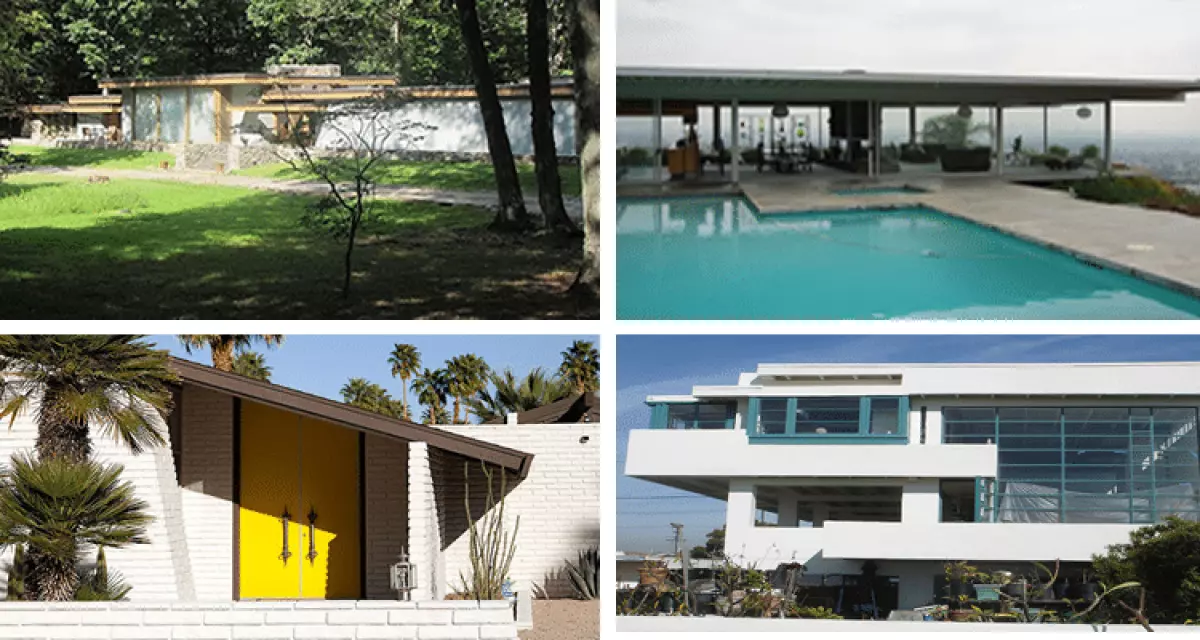
During the 20th century, a wave of architectural transformation saw a shift from traditional designs to more innovative aesthetics. Among the Modernist movements that emerged, mid-century modern architecture has stood the test of time and continues to be a beloved style to this day.
Taking inspiration from the groundbreaking designs of Frank Lloyd Wright and the avant-garde approach of Bauhaus artists, mid-century modern gave architecture a fresh twist. In this article, we delve into this pioneering genre, exploring its distinctive look and key characteristics.
What is Mid-Century Modern?
Mid-century modern refers to a design style that gained popularity from the 1930s to the 1960s. It represents a contemporary and seemingly futuristic aesthetic, emphasizing functionality. This movement influenced various forms of design, including interior, product, industrial, and graphic design. However, it's in the field of architecture that mid-century modern is most recognized.
Originally born in Europe, this style made its way to America thanks to architects such as Marcel Breuer, Walter Gropius, and Ludwig Mies van der Rohe, who played significant roles in the Bauhaus movement.
Defining Features of Mid-Century Modern Architecture
Mid-century modern homes typically encompass three prominent characteristics: a clean and minimalist aesthetic, a focus on blending indoor and outdoor spaces, and the use of angular structures.
Minimalist Aesthetic
In the mid-20th century, artists began exploring abstract forms, reimagining traditional art and pioneering new aesthetics. This interest in abstract shapes also extended to architecture, as seen in the minimalist appearance of mid-century modern designs.
These homes feature flat planes, clean lines, and minimal ornamentation both on the exteriors, often with monochromatic brickwork and occasional pops of color, and in their matching interiors. This no-fuss approach to design showcases the movement's unique aesthetic and its emphasis on functionality.
Emphasis on the Outdoors
One notable aspect of mid-century modern homes is their connection to nature. Architects working in this style integrated large windows and open floor plans into their designs, allowing for stunning views and ample natural light. Sliding glass doors further enticed residents to explore the outdoors and engage with their surroundings.
Angular Structures
To showcase their modernist approach to everyday architecture, mid-century modern architects embraced geometric shapes and asymmetrical compositions. Unlike structures influenced by preceding popular styles such as Beaux-Arts and Arts and Crafts, mid-century modern homes exhibit a distinct lack of historical references and visual formality.
Functional Design
The interior of mid-century modern homes matches the importance placed on their exteriors. Functionality takes center stage, with every aspect of the design intended to simplify and enhance daily life. Consistent with the overall style, the interiors often follow a minimalist and Scandinavian-inspired aesthetic.
Key Examples
Here are some notable examples of mid-century modern architecture:
- Gropius House by Walter Gropius, located in Lincoln, Massachusetts (1938).
- Lovell Beach House by Rudolph Schindler, located in Newport Beach, California (1926).
- Eames House, Case Study House No. 8 by Charles and Ray Eames, located in Pacific Palisades, California (1949).
- Farnsworth House by Ludwig Mies van der Rohe, located in Plano, Illinois (1951).
- Schröder House by Gerrit Rietveld, located in Utrecht, Netherlands (1924).
- Stahl House by Pierre Koenig, located in Los Angeles, California (1960).
- Glass House by Philip Johnson, located in New Canaan, Connecticut (1949).
Frequently Asked Questions
What defines mid-century modern?
Mid-century modern represents a design style that gained popularity from the 1930s to the 1960s. It is characterized by a contemporary and futuristic aesthetic, with a strong emphasis on functionality. This movement influenced various design disciplines.
What are the characteristics of mid-century modern architecture?
Most mid-century modern homes showcase three predominant characteristics: a clean and minimalist aesthetic, a focus on integrating indoor and outdoor spaces, and the presence of angular structures.
This article has been edited and updated.
Related Articles:
- Architecture 101: 10 Architectural Styles That Define Western Society
- Delightful Birdhouses Modeled After Historic Architecture
- Beach House Designed by Frank Lloyd Wright Is Available on Airbnb for $150 A Night









